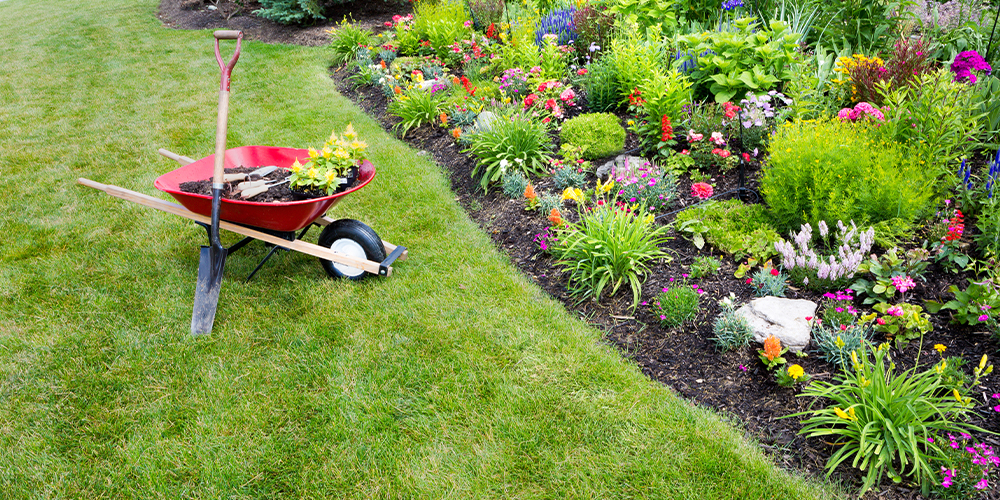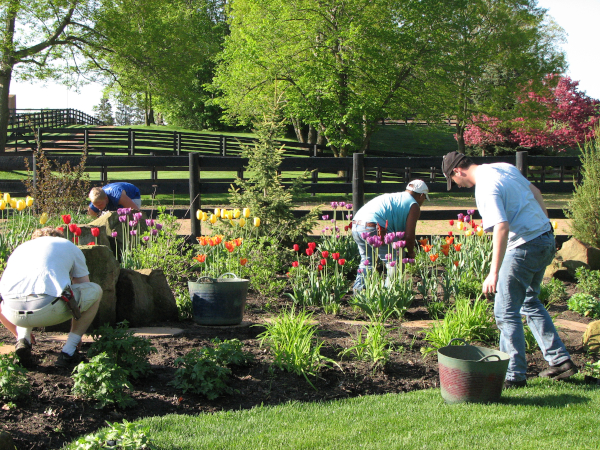Late Winter & Early Spring Are The Best Times To Prune.
In late winter, Garden cleaning if you haven’t already, cut off any broken and seriously scarred limbs caused by winter’s snow and ice. In late winter, all evergreen trees and shrubs should have unwanted lower branches cut.
However, not all shrubs & trees are clipped in late winter & early spring. Do you have any flowering shrubs? When to prune the shrub is mostly determined by when it blooms & whether it flowers on the same & previous year’s growth.
Summer-flowering shrubs should be pruned firmly at the end of the winter or very early in the spring before any new growths emerges! On “fresh” wood, they produce blossom buds i.e., wood which will grow this spring. Butterfly bush, panicle hydrangeas, smooth hydrangeas & roses are examples.
After the spring blooms have faded, prune spring-flowering shrubs. If you prune too early, you’ll be cutting away their buds & blooms because they blossom on previous season’s growth (“old” wood). Azaleas, mophead hydrangeas, forsythia, lilacs, & wisteria are some examples.
Carefully Seeding Bare Patches

Pets, snow ploughs, and vehicles can all cause damage to your yard throughout the winter. You might want to reseed some areas. The problem is that if you use a nonselective pre-emergent pesticide in the spring to control crabgrass, it will also prevent grass seeds from sprouting, which is why October is a preferable time to seed grass. If you really can’t stand the bare spots, consider spot-seeding them and also possible (by April) before applying any crabgrass management pre-emergent.
Give seeds enough time to germinate and grow before transplanting them. If this isn’t practicable, use pre-emergent weed control instead. It is preferable to take treatment of the majority of your yard now rather than waiting until the fall to make any lawn repairs.
Scuff up an area with a steel rake before seeding. Dislodge the earth. Scrape a bit of compost into the space. Apply grass seed to the area. (Unless the location is well covered, utilize a sun/shade premium mix.) Maintain the soil moist at all times. Straw matting & another material might be used to cover the seeds. Grass cuttings will suffice. To keep the seeds in place, simply cover the area with some form of substance.
If you’re using pre-emergent herbicides, we recommend fertilizing any patches in the lawn as soon as possible; shoots will sprout and fill up the brown spots in a few weeks. Sod is a preferable option if the brown spots are too large or you just cannot wait.
Don’t Fertilize Your Plants Too Soon
Autumn is the greatest time to fertilize since it helps to establish turf by providing the food that grass plants require to develop their root systems. Many people, though, will fertilize in the spring. Make sure you don’t fertilize too early in spring. This will prematurely divert the plant’s resources to leaf development. The grass, on the other hand, need phosphorus for root formation.
In most areas, late spring (about May) is the optimal time to apply the first spring application, just as the lawn is beginning to turn green & you need to promote a lush, green lawn. Fertilize before the summer heat sets in and after the grass has grown to its full potential. The plant will be able to restore its food supply with a good feed of 3/4 to 1 pounds of fertilizer. See Also Gardening.
When fertilizing grass inside the spring, use a light hand. Fertilizing with a lot of nitrogen (N) is bad for the grass & can also cause disease problems. A healthy grass is light, bright green in color; if it’s darker, it’s because it’s been over-fertilized that will also run off into our water supply. Always mind that you can start with a small amount and build up until you achieve the desired color.
Consider using a mulching mower, which allows grass clippings to be returned to the soil. This saves you effort and time while also enhancing the appearance of your grass. Because grass clippings can contain up to 90% water, they dry out quite quickly. It’s as if the grass cuttings have vanished. Plus, it returns 25% of the nutrients to soil, making it an excellent fertilizer.

